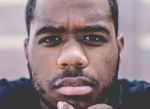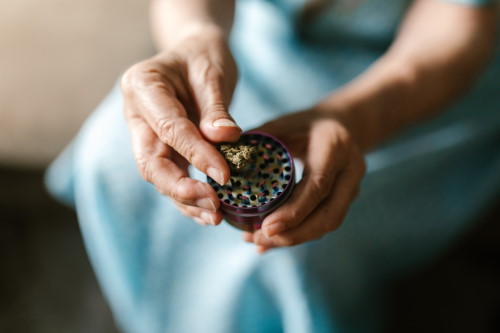“Who lives like this?” my then 7-year-old son cried out when his sister, then 13 years old, did a face-plant into her dinner plate. I pushed back my stool, stood up, and caught her as she seized, deftly unbuckling the strap that kept her safe in her own stool, and eased her jerking body to the floor.
Her other brother, 9 years old, had already run to the living room to grab a pillow to put under her head as I kept her stiffening and jerking arms and legs from hitting the table legs and stove. He brushed back the hair from her face with his own little hand.
BREAKING: Big Pharma In Outrage Over This Breakthrough Natural Painkiller
“It’s OK, it’s OK, it’s OK,” I murmured, until it stopped and she was still. I crouched down beside her, put my arms under her legs, and lifted her limp body up, making my way down the hallway and into her room.
The boys climbed back onto their stools and finished their dinners while I sat with Sophie, watching her fall into the deep sleep that generally followed these seizures that she had nearly every single night at the dinner table.
We live like this
Sophie got diagnosed with infantile spasms in 1995. It’s a rare and severe type of epilepsy. She was 3 months old.
The outlook for people with this terrible disorder is one of the bleakest of the epilepsy syndromes. Research suggests that a majority of those who live with infantile spasms will have some form of cognitive disability. Many will also develop other kinds of epilepsy later on. Only some will live normal lives.
For nearly the next two decades, my daughter would continue to have seizures — sometimes hundreds per day — despite trying 22 antiepileptic medications, enrolling in two trials of the ketogenic diet, and countless alternative therapies. Today, at 22, she’s severely disabled, nonverbal, and requires full assistance with all life’s activities.
Her two younger brothers have grown up knowing exactly what to do when she seizes and are exquisitely sensitive and tolerant to her differences. But I’ve always been cognizant of the special challenges they face as siblings of a person with disabilities. I compare myself to a tightrope walker who carefully balances each child’s needs, all the while knowing that one of those children will demand more time, more money, and more attention than the other two combined.
The answer to my son’s question that night was, of course, more deeply nuanced. But I probably said, “We do, and tens of thousands of other families live like this as well.”
‘Extreme’ parenting and revolutionary healthcare
We lived “like that” for over 19 years until December 2013, when our spot on a waiting list to try cannabis medicine came up and we received a bottle of Charlotte’s Web CBD oil. I’d begun hearing about the positive effects of marijuana on seizures many years before, even going so far as to walk into and out of the many marijuana dispensaries that were popping up in Los Angeles at the time. But it wasn’t until I watched the CNN news special “Weed” that I began to hope that we might really see some relief from seizures for Sophie.
The special highlighted a very young girl with a seizure syndrome called Dravet. The severe and relentless refractory seizures finally stopped when her desperate mother gave her an oil made from a marijuana plant that a group of marijuana growers in Colorado called “hippie’s disappointment” — you could smoke it all day and avoid getting high.
Known now as the eponymous Charlotte’s Web, the cannabis medicine Paige Figi gave her daughter Charlotte has a high amount of cannabidiol, or CBD, and a low amount of THC, the part of the plant that has psychoactive effects. According to Dr. Bonni Goldstein in her book “Cannabis Revealed,” the cannabis plant is “made up of over 400 chemical compounds, and when you use cannabis, you are taking a mixture of natural compounds that work together to balance each other.”
It goes without saying that the science of cannabis medicine is enormously complex and relatively new despite the marijuana plant being one of the oldest known cultivated plants. Because marijuana is classified federally as a Schedule I substance in the United States — meaning that it’s been determined to have “no medicinal value” — there’s been little to no research in this country until very recently regarding its effects on seizures.
Perhaps it’s difficult for most to understand what would motivate those of us who have children with refractory epilepsy to give them a medicine that’s not recommended by the traditional doctors who treat them.
I call the kind of caregiving we do “extreme parenting.” And in the case of medical cannabis, I’d venture to say that we’re revolutionaries.
A new way to live
Within one week of giving Sophie her first dose of CBD oil, she had the first seizure-free day of her life. By the end of the month, she had periods of up to two weeks without seizures. Over the next three years, I was able to eliminate one of the two antiepileptic drugs she’d been taking for over seven years.
We’re slowly weaning her from the other, a highly addictive benzodiazepine. Currently, Sophie has 90 percent fewer seizures, sleeps soundly every night, and is bright and alert on most days. Even today, four years later, I’m aware of how, perhaps, crazy this all sounds. To give your healthy child a substance that you’ve been led to believe is harmful and addictive is cause for concern.
It’s not a religious faith, as the growing body of science behind the marijuana plant and cannabis medicine is rigorous and compelling. It’s a faith in the power of a plant to heal, and a faith in the power of a group of highly motivated individuals who know what’s best for their children to share what they know and to advocate for more research and access to cannabis medicine.
A brighter future for all of us
TRENDING: Newly Legalized Herb Relieves Pain - Available Without A Prescription
Today, I draw Sophie’s cannabis medicine up in a small syringe and place it in her mouth. I periodically tinker with the dosage and the strain and make adjustments when necessary. She’s not seizure-free, nor is she free of disability. But the quality of her life is vastly improved.
Her seizures are dramatically fewer and much milder. She suffers fewer side effects from the traditional pharmaceuticals, side effects that included irritability, headaches, nausea, ataxia, sleeplessness, catatonia, hives, and anorexia. As a family, we no longer go into crisis mode each night at the dinner table.
In fact, Sophie hasn’t had a seizure at the dinner table since she began taking cannabis four years ago. We live an entirely different life, to tell you the truth.
“Who lives like this?” my son might ask today, and I’d answer, “We do, and everyone fortunate enough to have cannabis medicine might as well.”









